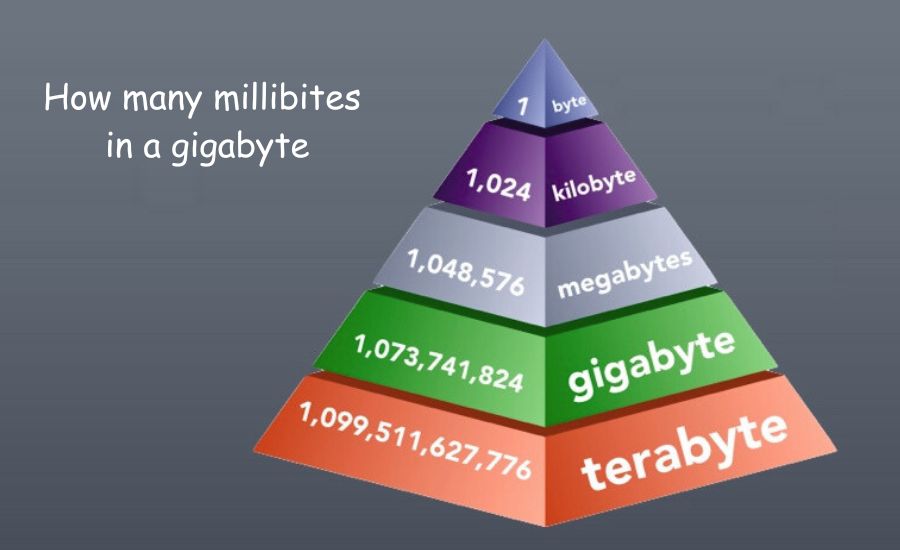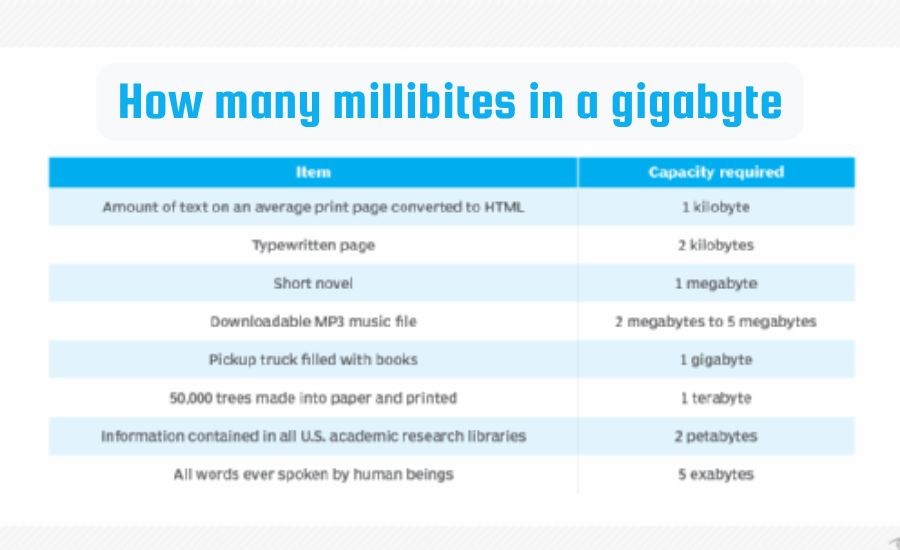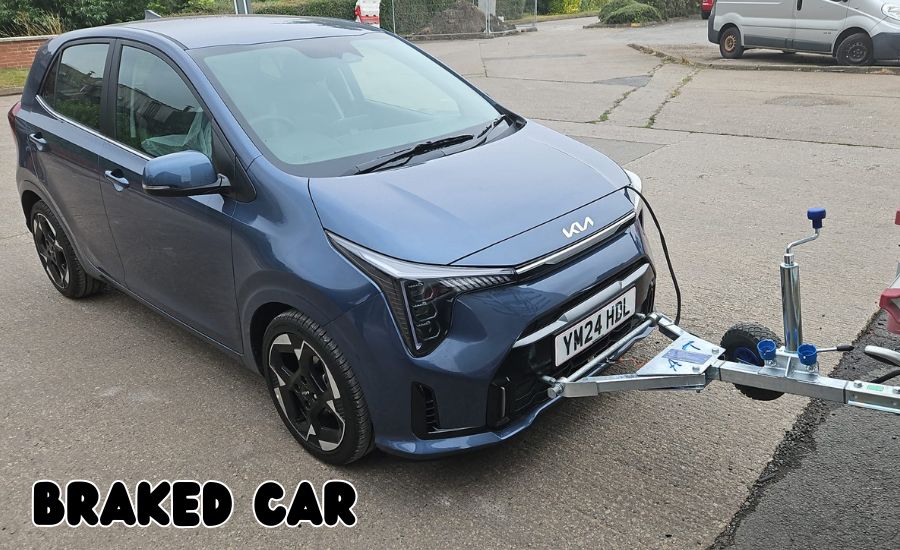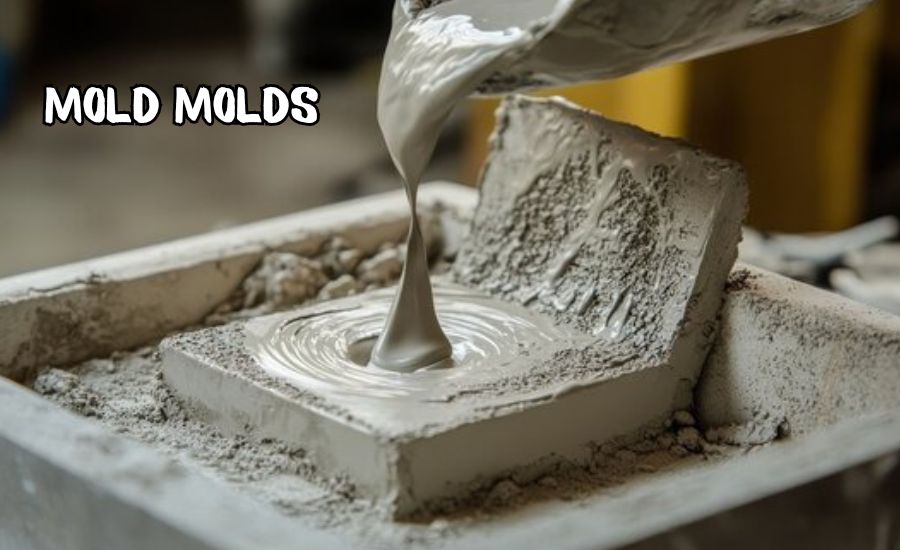How Many Millibites in a Gigabyte? Let’s Make It Super Simple!
How many millibites in a gigabyte? This might sound like a big question, but don’t worry! We are going to make it super easy to understand. If you ever asked this while using your phone, computer, or tablet, you’re in the right place.
A gigabyte is a way to measure digital stuff, like photos, videos, or games. A millibite is a very, very tiny part of that. In this blog, we’ll talk all about how many millibites in a gigabyte, how this works, and why it matters when we use the internet or save files.
What Does “How Many Millibites in a Gigabyte” Really Mean?
Have you heard the question, “how many millibites in a gigabyte?” It might sound a bit tricky, but don’t worry! It’s just like asking how many tiny pieces are inside one big thing. We use this question when we want to understand how computers and phones count space.
A gigabyte is something big. It can hold lots of things like pictures, games, and videos. A millibite is very, very small. So, when you want to know how many millibites make one gigabyte, you’re learning how small parts build a big one.
Think about a puzzle. One gigabyte is like the whole puzzle. Each tiny millibite is like one tiny puzzle piece. You need so many small pieces to finish the big picture. That’s how it works with digital storage too.
Learning about millibites and gigabytes is helpful. It makes it easier to understand how your devices work and why some things need more space than others. So next time someone asks, you can say, “I know what that means!”
Let’s Break It Down: How Many Millibites in a Gigabyte Step by Step
Let’s take it slow and break it down. The big question here is, “how many millibites in a gigabyte?” A gigabyte is made of smaller things called bytes. Each byte is also made of even smaller parts. So millibites are just very tiny bits that help build a gigabyte.
First, we know 1 gigabyte is 1,000 megabytes. Then, each megabyte is 1,000 kilobytes. A kilobyte is 1,000 bytes. If we keep going smaller, we get to millibites. So you see, it takes many steps to go from a gigabyte to a millibite.
It’s like going from a mountain to a grain of sand. The mountain is your gigabyte. And if you keep breaking it into smaller and smaller rocks, you finally get tiny grains — your millibites!
This step-by-step way helps you see how big and small these data pieces are. You don’t have to be a computer genius. Just think of it like building blocks — small ones join together to make a giant tower!
Why Should You Know How Many Millibites in a Gigabyte?

You might ask, “Why do I need to know how many millibites in a gigabyte?” That’s a great question! Even if you’re not a computer expert, this knowledge helps you in real life. It helps when you download apps or store photos on your phone.
If you know how data works, you can make smarter choices. You’ll know when your phone is full and why. You can also pick the right memory card or storage plan when you need one.
Imagine if you had a backpack. If you knew how many tiny things you could carry inside, you’d pack smarter. That’s just like understanding millibites and gigabytes for your digital backpack!
So even if the words sound big, they are super helpful to know. Learning this can save space, time, and even money when you use your phone or computer.
How Millibites and Gigabytes Help Your Phone Work
Millibites and gigabytes are like tiny workers inside your phone. They carry your photos, games, and apps. When someone asks “how many millibites in a gigabyte,” they are thinking about how many of those little helpers make up one big space.
Your phone needs space to work well. A gigabyte is a big room, and the millibites are like tiny pieces of furniture. You need all the pieces to make the room full and useful.
If you fill your phone with too much stuff, the gigabytes get full. That’s why knowing how the tiny millibites add up is helpful. It tells you how much more you can add before your phone says “No more room!”
So every little millibite matters. They all work together to help your apps run and your pictures stay safe. That’s the magic inside your gadget!
Easy Math Time: Counting Millibites in a Gigabyte
Let’s do some fun and easy math today. The big question is: “how many millibites in a gigabyte?” The answer needs a little counting, but we can do it step by step.
Start with this: 1 gigabyte has about 1 billion bytes. Now, if one millibite is one-thousandth of a byte, you can imagine how many you’d need to make that big number.
So if you multiply, you’ll find that 1 gigabyte has around 1 trillion millibites! Wow, that’s a lot of tiny pieces in one big chunk.
Don’t worry if that sounds like a big number. Just remember: a gigabyte is huge, and a millibite is super tiny. It’s just fun to know how many little pieces live inside your favorite apps and games.
Fun Chart: How Many Millibites in a Gigabyte and More!
Sometimes, a chart makes things easier to understand. If you’re asking, “how many millibites in a gigabyte?” let’s look at a fun and simple chart together!
| Unit | Amount |
| 1 Byte | 1,000 millibites |
| 1 Kilobyte | 1,000 Bytes |
| 1 Megabyte | 1,000 Kilobytes |
| 1 Gigabyte | 1,000 Megabytes |
| Total Millibites in 1 GB | 1,000,000,000,000 |
That’s a lot of millibites, right? All these small parts work together to store your games, music, and pictures.
Looking at a chart helps you remember things better. It’s a fun way to see big ideas in small boxes. Now, whenever you hear the word gigabyte, you’ll picture all those tiny millibites inside!
How Many Millibites in a Gigabyte – Real Life Examples

Let’s make this question real: “how many millibites in a gigabyte?” You may not see millibites every day, but they are always there — hiding in your photos, music, and videos!
For example, a high-quality photo might be 5 megabytes. That’s 5,000,000 bytes. And that’s even more in millibites. So every photo you take fills up many, many millibites of space.
When you download a video game, it might be 2 gigabytes. That means billions of bytes and trillions of millibites are being used just for fun!
So even though you don’t see them, millibites are part of your digital life. They are the tiny pieces that build everything you use on your phone or computer.
Can You Run Out of Gigabytes? Let’s Learn About Millibites
Yes, you can run out of gigabytes! That’s why it helps to know how many millibites in a gigabyte. When your device says “storage full,” it means all those tiny millibites have been used up.
Your phone or tablet needs empty space to work fast. If too many millibites are taken, it gets slow or stops working well.
Apps, photos, and videos take up lots of gigabytes. That means lots of millibites are used every time you download something.
So it’s smart to clean up your device sometimes. Delete what you don’t need. That way, your millibites and gigabytes have room to breathe!
Where Do You See Gigabytes and Millibites in Daily Life?
You see gigabytes everywhere! On your phone, tablet, and even your TV. So it makes sense to ask, “how many millibites in a gigabyte?” if you’re using these things every day.
When you buy a phone, you see “64 GB” or “128 GB.” That’s telling you how many gigabytes it can hold. And inside those gigabytes are trillions of millibites waiting to be filled.
Even when you watch videos or listen to music online, gigabytes are used. And those come from small millibites building the big file.
Next time you’re using your favorite app, remember — there are millions of millibites making everything work smoothly for you.
How Many Millibites in a Gigabyte: What Kids Should Know
Kids are using gadgets every day, so it’s smart for them to know how many millibites in a gigabyte. It helps them understand storage, downloading, and saving files.
Think of millibites like Lego pieces. You need lots of little ones to build one big thing — the gigabyte! That’s how data works too.
When kids know about storage, they can clean up their tablets or phones and make space for more fun stuff.
So if you’re a kid reading this, you’re already ahead! Keep learning and you’ll be a tech pro in no time.
Tech Talk Made Simple: From Millibite to Gigabyte

Let’s take a tech journey! We start with a millibite, the smallest step. Then we go up — byte, kilobyte, megabyte, and finally gigabyte. So if you wonder “how many millibites in a gigabyte,” it’s like asking how many stairs to reach the top floor.
Each step is 1,000 times bigger than the last one. So a millibite is very, very small, and a gigabyte is super big.
This simple way of seeing things helps you understand how your devices talk and work.
You don’t need to know all the math. Just remember the order, and you’ll always know where you are on the tech ladder!
Are Millibites Real? How Many Fit in One Gigabyte?
Yes, millibites are real — just not something we talk about often. People mostly use bytes or gigabytes. But still, asking “how many millibites in a gigabyte” is a fun way to learn how storage works.
Even though we don’t see them, millibites are like tiny puzzle pieces. Without them, gigabytes can’t be made.
If you wanted to count, you’d need a trillion millibites to make one gigabyte. That’s a lot, but it shows how amazing your device really is!
So yes, millibites are real. And now, you’re one of the smart people who knows all about them!
How Many Millibites in a Gigabyte – Final Fun Facts!
Let’s end with fun facts about “how many millibites in a gigabyte”! Did you know that your phone is full of trillions of these tiny bits? They’re like little workers making everything run.
A single photo can have millions of millibites. A movie? Billions! That’s how busy your gigabytes get when you use them every day.
You can’t see millibites, but they are there. Every click, tap, and swipe uses them up.
Now you know the secret life of digital space. You’re smarter than ever, and your gadgets thank you for learning how they work!
Conclusion
Wow! We’ve learned so much about how many millibites in a gigabyte. It might have sounded tricky at first, but now it’s easy! A millibite is super tiny, and a gigabyte is really big. You need lots and lots of millibites to make one full gigabyte. It’s just like building a big Lego tower using many tiny bricks.
Now when you use your phone, tablet, or computer, you’ll know what’s happening inside. Those tiny millibites are working hard to store your games, pictures, and videos. Knowing this helps you take care of your device better. So go ahead — be proud, smart tech hero — you did it!
Keep Reading: Queensway Dental Billingham
FAQs
Q: What does “how many millibites in a gigabyte” mean?
A: It means we want to know how many tiny data parts (millibites) fit inside a big data unit (gigabyte).
Q: Is a millibite smaller than a gigabyte?
A: Yes, a millibite is much, much smaller than a gigabyte. It’s like one tiny drop in a big water bucket.
Q: How many millibites are in 1 gigabyte?
A: There are 1,000,000,000 (one billion) millibites in 1 gigabyte.
Q: Why do we use gigabytes instead of millibites?
A: Gigabytes are easier to use when talking about big things like apps, videos, or games.
Q: Do phones and tablets use millibites?
A: Not directly. They use bigger units like gigabytes, but deep inside, tiny parts like millibites help store data.
Q: Can I run out of gigabytes?
A: Yes! If you use too many apps or watch lots of videos, your device can run out of gigabytes.
Q: Are millibites real or just a fun word?
A: Millibites are a fun way to imagine small data parts. The real tiny unit is called a bit, not millibite.
Q: Is it good to learn about how many millibites in a gigabyte?
A: Yes! It helps you understand how your gadgets work and how to use them wisely.





Post Comment